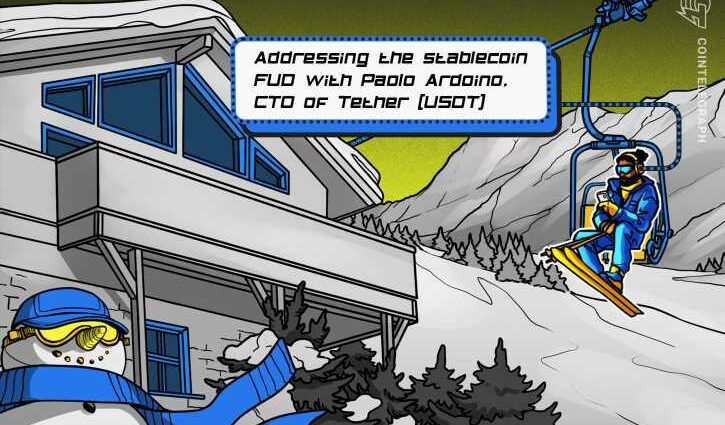Stablecoins have been under much scrutiny since the implosion of the third-largest stablecoin by market cap, TerraUSD (UST), in May 2022. The UST saga led to a lot of skepticism that caused consumers to question the safety of stablecoins.
In the seventh episode of Hashing It Out, Cointelegraph’s Elisha Owusu Akyaw (GhCryptoGuy) interviews Paolo Ardoino, Tether’s chief technology officer, about how stablecoins work, and the two discuss frequently asked questions about stable tokens.
Fear, uncertainty and doubt (FUD) rocked the boats of stablecoin issuers after TerraUSD depegged in 2022. Tether was one such issuer at the receiving end of the FUD. Ardoino claimed that some of the FUD was being spread privately and publicly by competitors. Nevertheless, the Tether chief technology officer said that the FUD only served to improve trust between consumers and the company.
“I like the FUD so much because we can respond to it with facts.”
One such fact was the ability of the company to withstand the pressure that came as a result of panic in the market. Ardoino pointed out that Tether was able to process $7 billion in redemptions in 48 hours, which was 10% of the company’s reserves. According to him, it was an achievement that will be recorded in the history books of global finance.
On how to ensure that the industry does not again end up in a situation similar to what happened with TerraUSD, Ardoino argued that developers should stick to making stablecoins the traditional way and avoid the more experimental algorithm-based method. He believes that algorithmic stablecoins are inefficient and unsafe.
Related: Bitcoin advocate Najah Roberts explains why BTC is a tool for empowerment
Furthermore, Ardoino mentioned that algorithmic stablecoins might work only in instances where the stablecoin is heavily collateralized with more proven cryptocurrencies like Bitcoin (BTC) instead of cryptocurrencies issued by the same developers building the stablecoin.
“The problem with Terra was that their backing was a token they also created. Tether’s backing is the U.S. treasury bills, is the U.S. economy, so you cannot have traders attacking us because we have all the reserves.”
In the episode, the two also discuss:
- How stablecoins work
- Algorithmic stablecoins vs. traditional stablecoins
- The TerraUSD deppeging saga
- Use cases of stablecoins in developing economies
- Tether Peso and Tether Gold
- “Stablecoins war”: Tether (USDT) vs. USD Coin (USDC) vs. Binance USD (BUSD)
- Stablecoin regulation
- Central bank digital currencies vs. stablecoins
Listen to the full episode on Spotify, Apple Podcasts, Google Podcasts, or TuneIn to get all the insights on stablecoins and Tether. You can also check out Cointelegraph’s catalog of shows on the new Cointelegraph Podcasts page.
Source: Read Full Article
-
Axelar Partners With LongHash Ventures to Launch Its First Global, Cross-Chain Accelerator Program
-
Major Brands Such as Budweiser Are Increasingly Turning to NFT Technology
-
Australia installs more Bitcoin ATMs than whole of Asia
-
Binance banking problems highlight a divide between crypto firms and banks
-
XRP Lawsuit Update: Will the SEC Pay Any Reimbursement for Losing Against Ripple? – Coinpedia Fintech News

